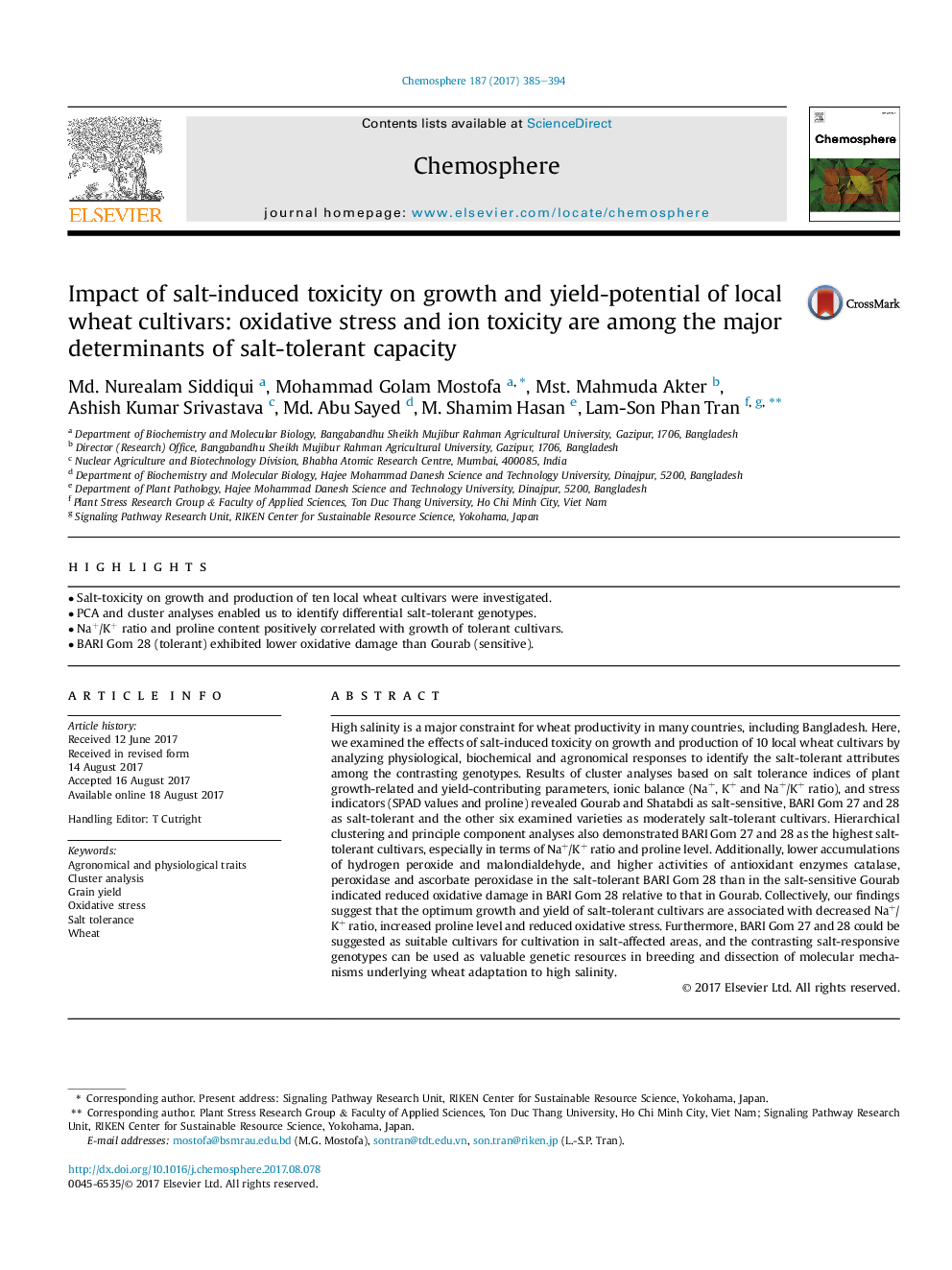| Article ID | Journal | Published Year | Pages | File Type |
|---|---|---|---|---|
| 5746446 | Chemosphere | 2017 | 10 Pages |
â¢Salt-toxicity on growth and production of ten local wheat cultivars were investigated.â¢PCA and cluster analyses enabled us to identify differential salt-tolerant genotypes.â¢Na+/K+ ratio and proline content positively correlated with growth of tolerant cultivars.â¢BARI Gom 28 (tolerant) exhibited lower oxidative damage than Gourab (sensitive).
High salinity is a major constraint for wheat productivity in many countries, including Bangladesh. Here, we examined the effects of salt-induced toxicity on growth and production of 10 local wheat cultivars by analyzing physiological, biochemical and agronomical responses to identify the salt-tolerant attributes among the contrasting genotypes. Results of cluster analyses based on salt tolerance indices of plant growth-related and yield-contributing parameters, ionic balance (Na+, K+ and Na+/K+ ratio), and stress indicators (SPAD values and proline) revealed Gourab and Shatabdi as salt-sensitive, BARI Gom 27 and 28 as salt-tolerant and the other six examined varieties as moderately salt-tolerant cultivars. Hierarchical clustering and principle component analyses also demonstrated BARI Gom 27 and 28 as the highest salt-tolerant cultivars, especially in terms of Na+/K+ ratio and proline level. Additionally, lower accumulations of hydrogen peroxide and malondialdehyde, and higher activities of antioxidant enzymes catalase, peroxidase and ascorbate peroxidase in the salt-tolerant BARI Gom 28 than in the salt-sensitive Gourab indicated reduced oxidative damage in BARI Gom 28 relative to that in Gourab. Collectively, our findings suggest that the optimum growth and yield of salt-tolerant cultivars are associated with decreased Na+/K+ ratio, increased proline level and reduced oxidative stress. Furthermore, BARI Gom 27 and 28 could be suggested as suitable cultivars for cultivation in salt-affected areas, and the contrasting salt-responsive genotypes can be used as valuable genetic resources in breeding and dissection of molecular mechanisms underlying wheat adaptation to high salinity.
